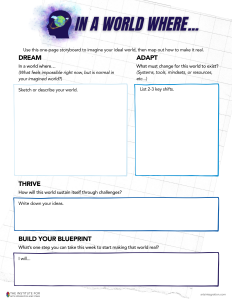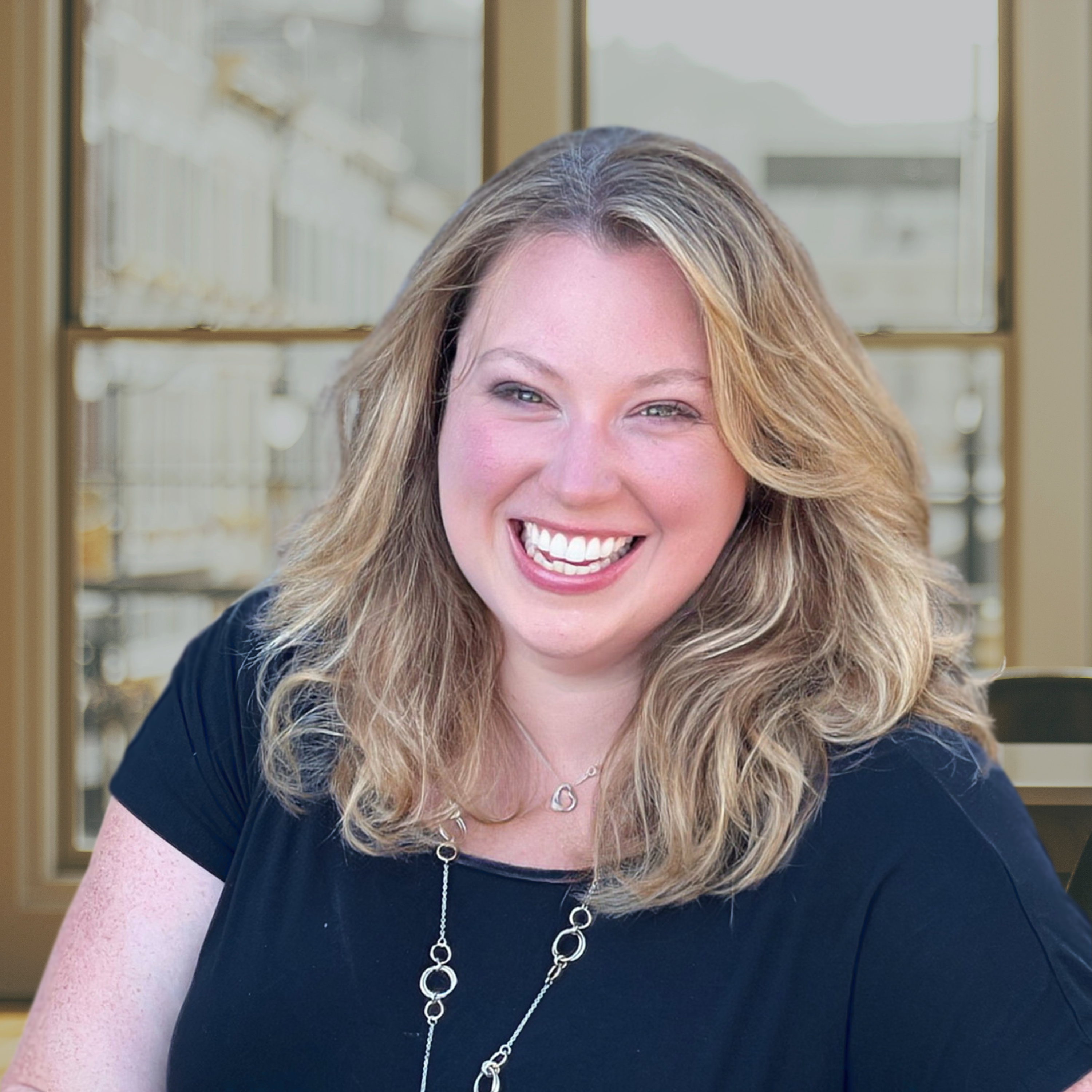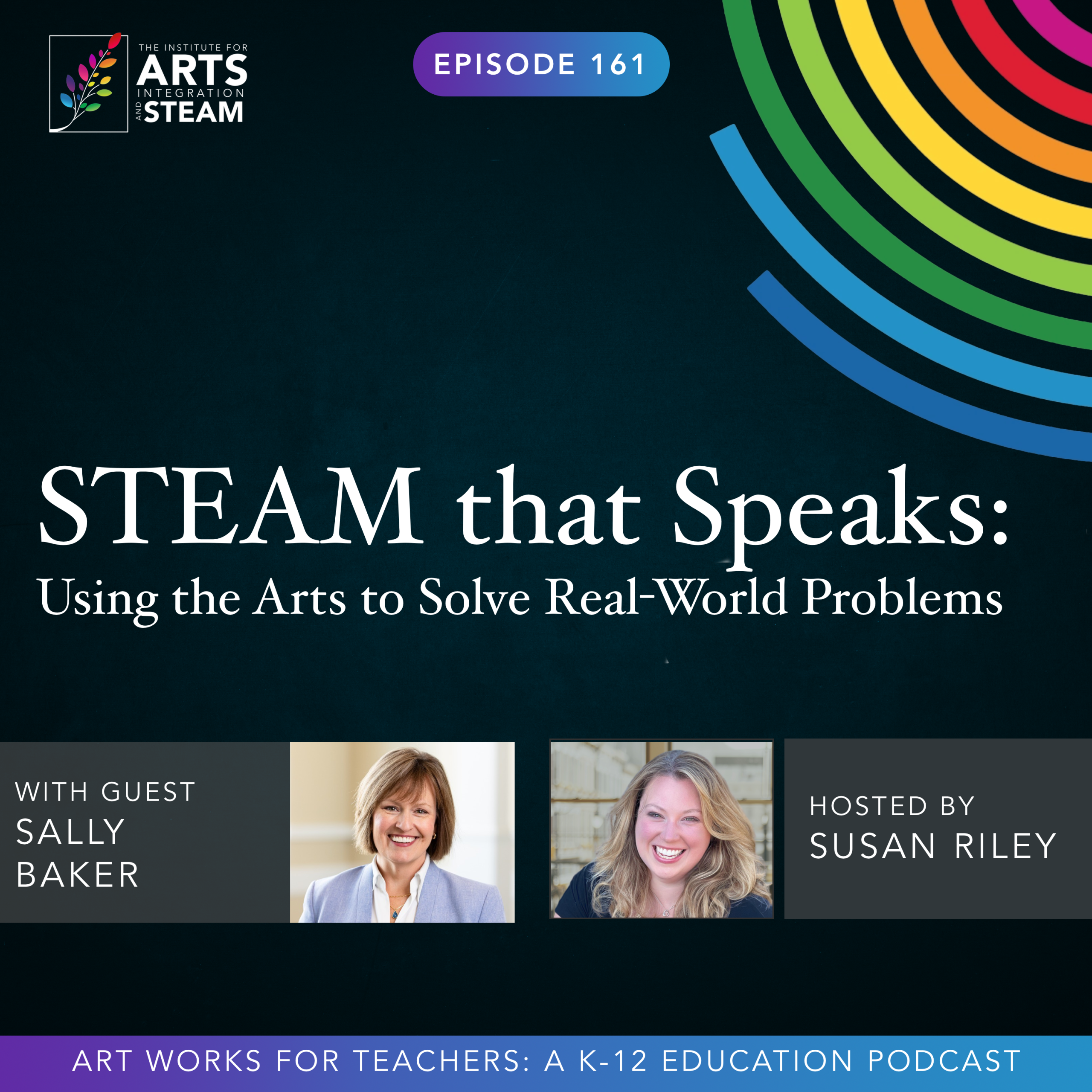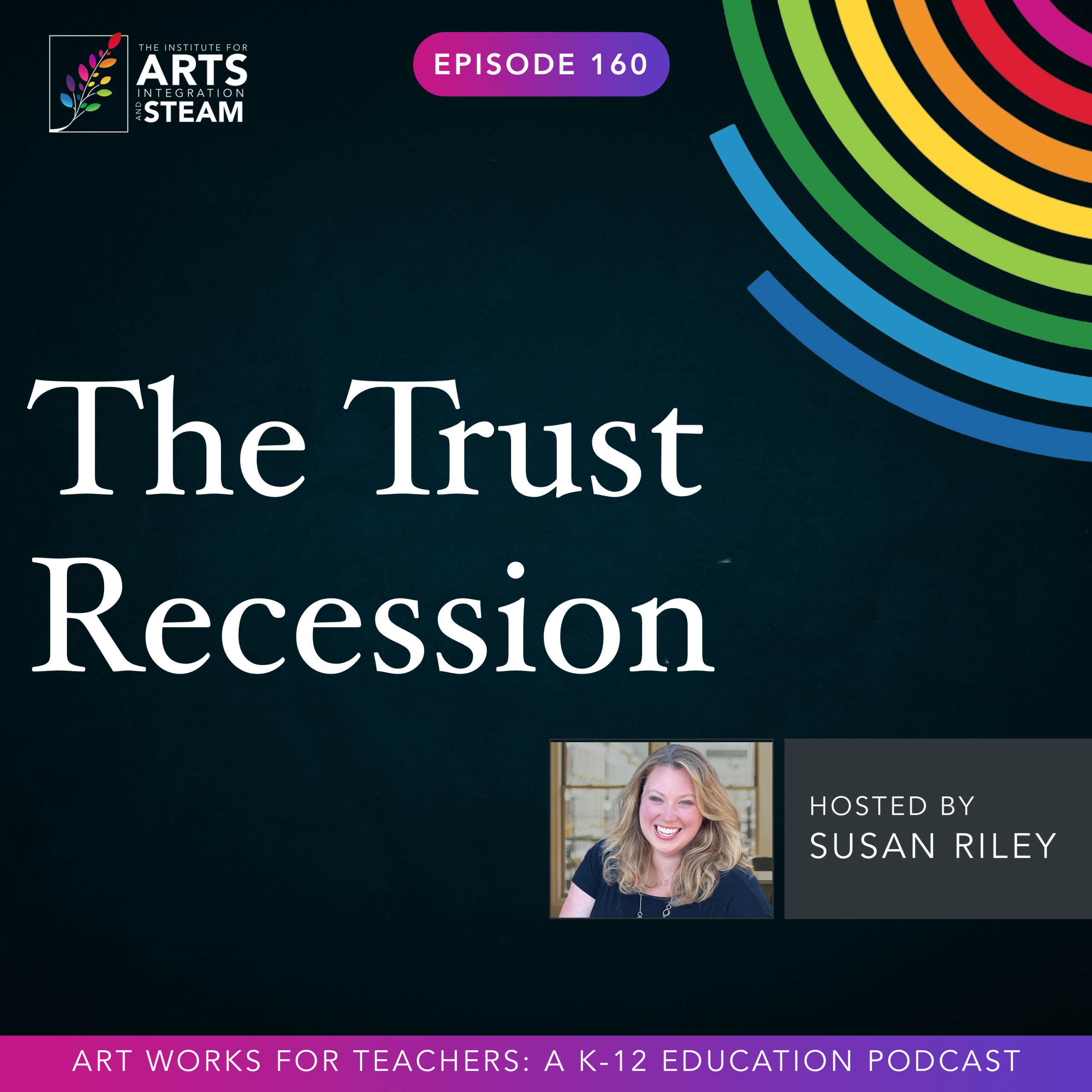ART WORKS FOR TEACHERS PODCAST | EPISODE 159 | 28:59 MIN
The Science of Dreaming Big
Enjoy this free download of the In a World Where… Activity.
Well, hi, Billy. Thank you so much for joining me today.
Billy
So good to see you, Susan. How are you?
Susan
Wonderful. Yeah, I'm good. Good. So I always like to begin our show with allowing our guests to just share their journey so far. Journey in terms of how did you begin the work that you're doing now? What caused you to get into it? What are you doing now in terms of your work and what does that look like?
Billy
Yeah, thank you. Thank you for asking. So greetings, people of Earth. I am Billy Allman. I'm an astrobiofuturist, which essentially means that I am exploring how nature has the potential within these hidden blueprints that exist in the natural world to improve the human condition wherever humans may find themselves, which is primarily on Earth.
And the way that that kind of comes to life in a lot of fun ways for me is being able to go out and learn more about the natural world and learn more about indigenous connections to the land and to the earth. And then being able to find ways where these hidden blueprints in the natural world and these insights from wisdom of the past can inform how we create better and bolder futures. And a big part of how that's coming to life for me right now is in being able to talk to a lot of students in STEM and also STEM educators about how to build these big bold futures.
Susan
That's amazing. And I had not heard the term astrobiofuturist until we were researching for this show. And I'm like, that is such a cool job title. And first of all, who knew that that was even kind of a job? What led you to this kind of work? And did you create that term? Like, did you make it up?
Billy
Yeah, yeah, so it's funny. So one day, and I think this actually happened early on in the pandemic, I was going through all the things that I had done in my career, know, working for Disney as an Imagineer, you know, filming a TV show for Animal Planet, you know, being one of the only wildlife hosts of a cable television show with that Animal Planet show and then this work of exploring nature's blueprints through this concept of biomimicry and, and even within that realm of, of biomimicry, a lot of the things that I was looking at were the applications for, for space exploration. And, know, around that same time, you know, things with, you know, George Floyd took place. And so I was at a very contemplative space of, you know, where, where can I put all of these unique experiences I've had and how do they come together in a way that can be some kind of gift or contribution? Because I think by all accounts, I've been blessed and had a really cool professional and personal life. And so I was writing in my journal, my sketchbook, and I had these three bubbles of space exploration, of you know, bio mimicry and of, know, what I've learned about creating bold futures from, from my time at Imagineering. And I just kept kind of like subconsciously writing and, I kept breaking down the passions and the insights of those three areas. And where I landed on was this bubble that said space and then below it said Astro and then bio mimicry and then bio underneath it. And then, the work that I was mostly doing for Imagineering about thinking 10, 20, 30 years ahead of what's possible and how to reverse engineer those possibilities into reality. And so then I wrote Futurist under that. And my wife at the time, she saw what I'd wrote down. She was like, that's the work that you're doing now in these three different avenues.
But if you combine them, that is also who you are. And so that term came through me exploring, I'm doing these three things in these buckets, but I also see each piece of these buckets in each individual section. And then that's really where the term came from. And it also made me realize that there's so many people, all people, have this multifaceted nature to them.
But right now there's really only one bucket that seems to be the only bucket they can fit in, which is why I think a lot of people don't necessarily feel fulfilled as much as they can right now. And so part of this work of me being an Astro-Wild Futurist is also helping people to find ways for these multifaceted other venues and presentations of themselves to coexist in the work that they're looking to do and the futures that they're looking to build.
Susan
Amazing. One of my mentors, Marie Forleo, calls it multi-passionate. And I love that. It doesn't make you fit and conform into a box, right? And it's what we talk about with STEAM education all the time, that even within STEAM, right, we still have these boxes of, that's the creative part. And then we have the science part over here, and we have the math part over here. And it's not how the world works. It's just, it's not how we're designed to live. And so, I would imagine in your work, the through line of UL is the creative problem solving that comes along with each of those areas, right? How do you explore that, investigate that, and bring that to the surface when you're working in STEAM education or with others who are working in STEAM?
Billy
What I love about that question is creative problem solving, the solution is always creative. So the solution to any problem is something that was created or thought up or imagined. so it doesn't matter whether you are an accountant, an engineer, or a designer. Creativity has no what do we call them in church? Denomination, right? There's no denomination for creativity where it solely sits in there. Creativity is the practice of taking in information and reinterpreting it into a new expression that addresses some type of problem or challenge, right? And makes that problem or challenge easier to experience or turns that problem into a new type of solution.
Right? And so the thing with STEM and with STEAM is you don't really realize how much STEM and STEAM are omnipresent in everything that we do. And so because we have these typical ways of identifying it, we don't realize that we're constantly interacting with science and we're constantly creating technologies. I think over time we've kind of developed an idea that technology is this microphone and you know the this headset, but we don't realize that you know technology is the means and methods of doing something right. So when when you're applying for a patent. You have to fill out this huge form and you know at the top of it. It's it's it's kind of at least the last time that I remember this it was labeled the means and methods of XYZ right and and.
That is what a technology is. So we don't realize that we are constantly creating technologies any time that we are trying to address a challenge. And when you start to kind of peel back the layers of what these words mean, that's also where I think for me, the fun in working with organizations and educators is helping them see how accessible STEM and STEAM are and how they're really embedded into everything that we try to do in the daily.
Susan
Yeah, I totally agree. think the idea of breaking them apart, really looking at what they mean, the idea of engineering for me is always so interesting because I feel like engineering and creativity and the arts kind of just, they all work the same. Like it's just, there's more alike than unalike as Maya Angelou would say. Now you talked about biomimicry and I want you to explain exactly what biomimicry is first.
But then I would love to explore how does biomimicry manifest itself in the world as we're looking at it in terms of inventions, ideas, how we come up with new stuff.
Billy
Yeah, biomimicry is a term that was created by a brilliant woman and a dear friend named Janine Benyus. And it speaks to the idea of emulating the strategies that have existed in the natural world, how organisms in nature go about solving problems in their biology, and then essentially copying those strategies and imitating them to create solutions at the human scale. And another way that I like to say that is it is exploring and identifying which of nature's blueprints for solving a problem we can apply to the problems that we now have because there's so many things about nature that are inherently entrepreneurial, inherently sustainable, and inherently innovative and efficient by looking at these.
Susan
Can you give an example of like can you give an example? I'm pause you I went to that can you give an example of what that looks like because I'm thinking about literally I'm sitting here looking outside at nature right now And I'm seeing a squirrel running up a tree and I'm thinking are you entrepreneurial mr. Squirrel? And how does that work right like so can you give an example of what you mean by that?
Billy
Yes, okay, so let's do this as a live exercise. This is gonna be interesting. This might not make the cut. Okay, let me just pause that right there. This might not make the cut. So let's talk about the squirrel, okay? So what are you seeing that squirrel do? Or what did you just see that squirrel do?
Susan
He was running up and literally ran up the tree and then turned right back around and came right back down.
Billy
Okay, so. There's a couple of things that the squirrel behavior wise is probably facilitating, right? Like sometimes there's another squirrel, right? Where that squirrel has hidden some nuts somewhere and it feels threatened and that squirrel is, you know, the other squirrel is moving in on his turf. Actually, let me go about this a different way. Cause this could get really complicated really fast and I don't want to do that.
Susan
We can focus on the tree if that's easier. the… wherever else is around.
Billy
What? So, so here's, I'll go about this a different way. what, what nature understands, not, not in an anthropomorphized way, but like biologically, right? There are, what nature understands is that there are limits, right? There are limits to the amount of available resources that can exist at any given time in any given location, right?
And there's often ebbs and flows of access to these resources. So organisms, let's take a desert for example. What is the number one resource, the premium resource in a desert? Water, right? So organisms that have to live in that environment have to be extremely efficient with how they use water and extremely innovative in how they collect and store that water. So the entrepreneurial part comes out in the way that through natural selection and just mutations in our DNA, expressions of our genetics create different adaptations. So for example, why are cacti covered in spikes?
Susan
Good question. I used to know the answer and I do not. I'm coming up with blank.
Billy
So OK, this is great. This is great. This is why I don't know if this is going to make the podcast or not. I'll be honest. OK, yeah. So the spikes that we see on a cactus are really modified hairs. And if you're in a desert and you have this ability to tap into water below deep groundwater, with your roots and pull up water through capillary action and store it in your body as a cactus. And other animals know that you can store that water. That means you have to protect that water source. So over time, cacti have developed these different methods of protecting themselves from predators who would come on and you know, try to gather some of that water from their body, right? So those spikes are a deterrent, right, against people infringing on their resources, right? Now, the other part of that, though, is that to pollinate, you do want to attract certain other organisms that can facilitate that exchange. And so you have to be willing to offer something up in exchange for the resources that you're getting back in terms of pollinating. So that's where the flowering comes into play. So that you're attracting very specific, you're marketing yourself in very specific ways to a target audience that is conducive to the type of exchange that you need. So when you think of ecosystems, ecosystems are really marketplaces, where there are exchanges of all types of commodities that are taking place in a chemical, multicellular type of way that we don't necessarily see. But the same rules of a marketplace and the same type of sense of managing risks and identifying opportunities are taking place in the natural world just as much as they are on Wall Street.
Susan
I love that. That's so interesting. my gosh. Just like mind blown right there, Billy. I just, I had no idea that it was, those spikes were like hairs. Had no idea. That was, that's amazing. And just the idea, you're right. Absolutely. That there's this exchange of, you you give, I give, it's an exchange of value, which is essentially what business is if we break it down, right? Just, that's so fascinating. So.
How does the science of biomimicry and astrophysics and all the other things that you work on, how does that work and engage with the arts to either enhance what is offered or as a pathway towards what's offered?
Billy
Yeah, I love that. So that, and that brings me to something else that I meant to say. So the thing about nature is, by most systems of belief, the natural world has existed longer than what we identify ourselves as humans to have existed, right? So they've had a head start, the natural world has had a head start on developing and identifying strategies that can sustain, be sustainable, and allow life to continue for generations and generations. So there's a lot of R &D that has already happened in the natural world. And that's why we now have these blueprints that are kind of hidden in the patterns that you have to look for in nature. And so what I get to do.
And what I love doing is telling the stories of how those blueprints not only work, but how they can be applied to coming up with solutions. And so the storytelling of it for me is where that artistic role really comes into play. Because it is not only storytelling it verbally, but it's also, OK, how do I illustrate the idea that
You and I are like seaweed in this ocean of uncertainty that exists in the world around us right now. How do I help people understand that right now it's important to be anchored to something in the same way that the roots of seaweed are anchored around a rock? And it's important to be flexible in a way that the seaweed is also flexible in the ocean while still being anchored. So it's not just the you know, the painting with the words that help tell that story. But it's also how do I get you to emotionally connect to seaweed in a way where you can see yourself as the seaweed that would allow you to understand that even in this crazy time in the world around us, there are still opportunities for you to stay afloat while being flexible and being anchored in the place that you're in and thrive in this unwavering dynamic of a swirl that is the world right now. Does that answer your question? OK.
Susan
Yes, yes, absolutely. I think there's so, we have so many conversations around why the arts are valued, what or are they valued? Why should they be valued? What do they contribute to the world? And it feels very transactional. And I know a lot of folks who say things like, you know, it's the arts make the world worth living. They absolutely do. But what I think that you've just illustrated so beautifully is that the arts actually give you the mechanism to see how the world continues to evolve and grow and move and change and become, right? Including all of us. It's the mechanism itself that allows us to do that. So I'm so excited to hear that, which is amazing. And so I know that creativity is a part of who you are. You've talked about being an Imagineer for Disney. I'm curious because you said that as part of that, you had to imagine what the world could be in 10, 20, 30 years, right? And be able to kind of future cast. What does that process look like? How do you do that? And how do you know when you've gone too far, if you haven't gone far enough? And how do you use creativity to help you get there?
Billy
Yeah, I love all these questions. They're so good. And what I've discovered from not just the time at Imagineering, but also from exploring the natural world is there is this framework that works for me at least that I like to share whenever I'm working with an organization or with students. And it is.
There's these three components to taking something that feels impossible and reverse engineering it into something that is real. And I call it the DAT framework, which is Dream, Adapt, Thrive. And that first part, the dreaming part, is really where you are.
First identifying, okay, what is our North Star? What is our point of orientation? What is the thing that we are really trying to change in the world? This can be a theory of change, or it could just be, what is an aspiration that we have? In this futurism work, one of the things that I've learned is that you don't create the future, you can, but what tends to happen is that that future can shrivel up because it doesn't have enough support around it. And so what I've learned is that what you actually want to do is you want to create the world where that future can emerge. And you create that world by identifying the collection of ecosystems that need to be interconnected, that can sustain the growth and development of that future. So that that future can not only live, but thrive, especially thrive through the adversity of the future becoming real. And so that first idea of what is the aspiration we have, what is the thing that we want to exist in the world, and it actually takes me back to movie making and trailers.
You know when you see a trailer and they say in a world where? alien robots come to earth and disguise themselves as vehicles right What those trailers are doing is they're setting the rules? the the foundation for you to understand how things operate in that world and so part of this process of world building is setting those ground rules, okay?
What is the thing in this world that in our current world would be abnormal, but in our desired world is the norm?
And that normal thing is the thing that you're saying is that North Star aspiration. So you set that first aspiration, and then you start to essentially throw a lasso around that star that you've cast and start to reverse engineer the steps to make that a reality. I don't know if that made sense. But OK.
Susan
That totally makes sense, as you're describing it, I'm envisioning one of my last trips to Disney where I actually go in to see, or a theme park of any kind, where you're seeing worlds put together. And it's like walking through Pandora, right? Like at Animal Kingdom, that you see the world and it establishes those parameters for you so that you can feel like you are actually there and suspend reality just long enough that this makes sense. I also loved about what you said is that really creativity is living within constraint and that you set those constraints, right? And to allow for new things to flourish, which I think is sometimes overlooked when it comes to creativity. So I love that you shared that with us.
Billy, I could learn from you all day. I cannot believe that our time is almost up. This is crazy. I have learned so much already. I feel like I just took a science class, so thank you. For those who are listening and would love to learn more about you and your work or to bring your ideas into their classrooms, how can they find out more and get in touch with you?
Billy
Yeah, so if those are things that you're interested in, if you think I can help, email me at connect at BillyAlmond.com. And I'm on all of the socials, so at Billy underscore A-L-M-O-N. Or to learn more about me and my work, you can also visit my website at BillyAlmond.com.
Susan
Perfect, yeah. We will put all of that into the show notes so that it makes it easy for everybody to find you and get in touch. Billy, thank you so much for joining me today. It has been a true pleasure.
Billy
Likewise, the pleasure is mine. Thank you again.









